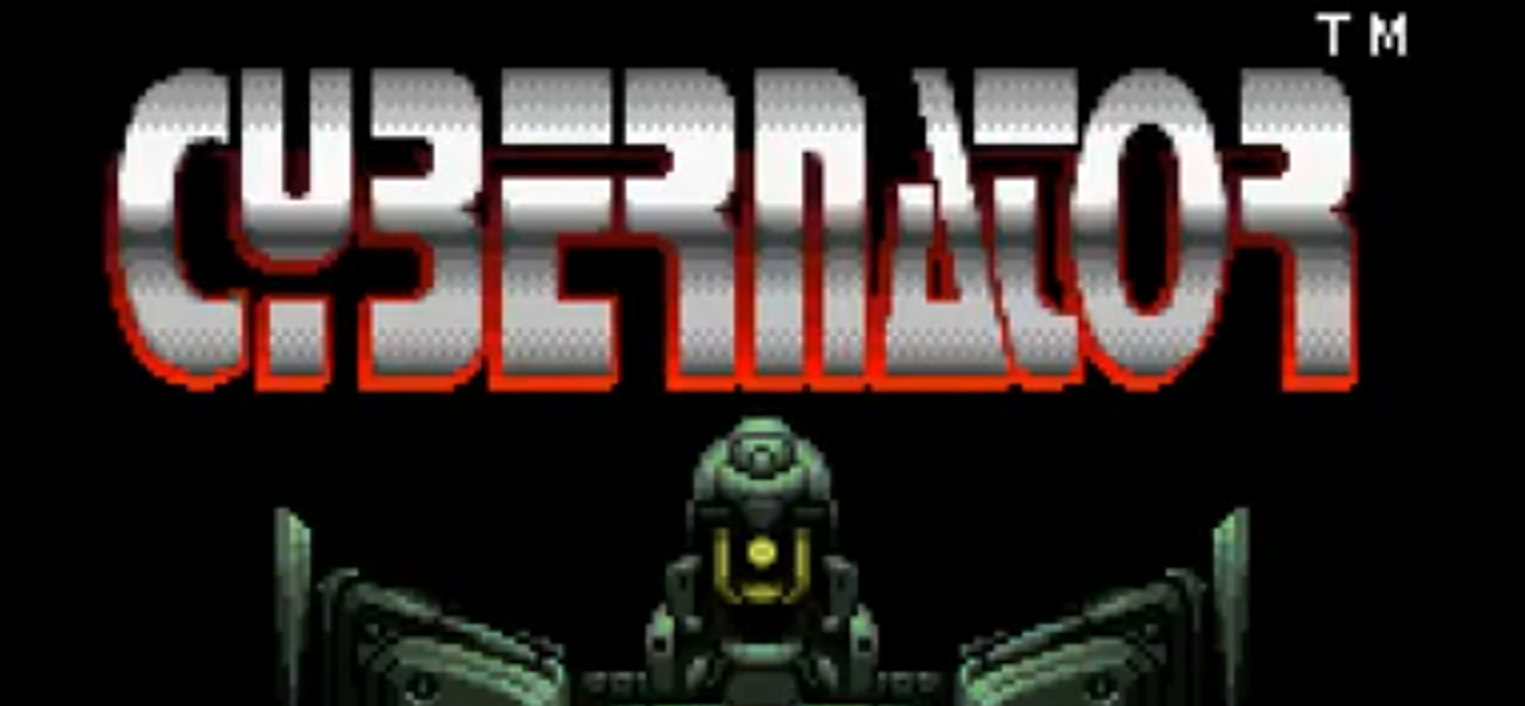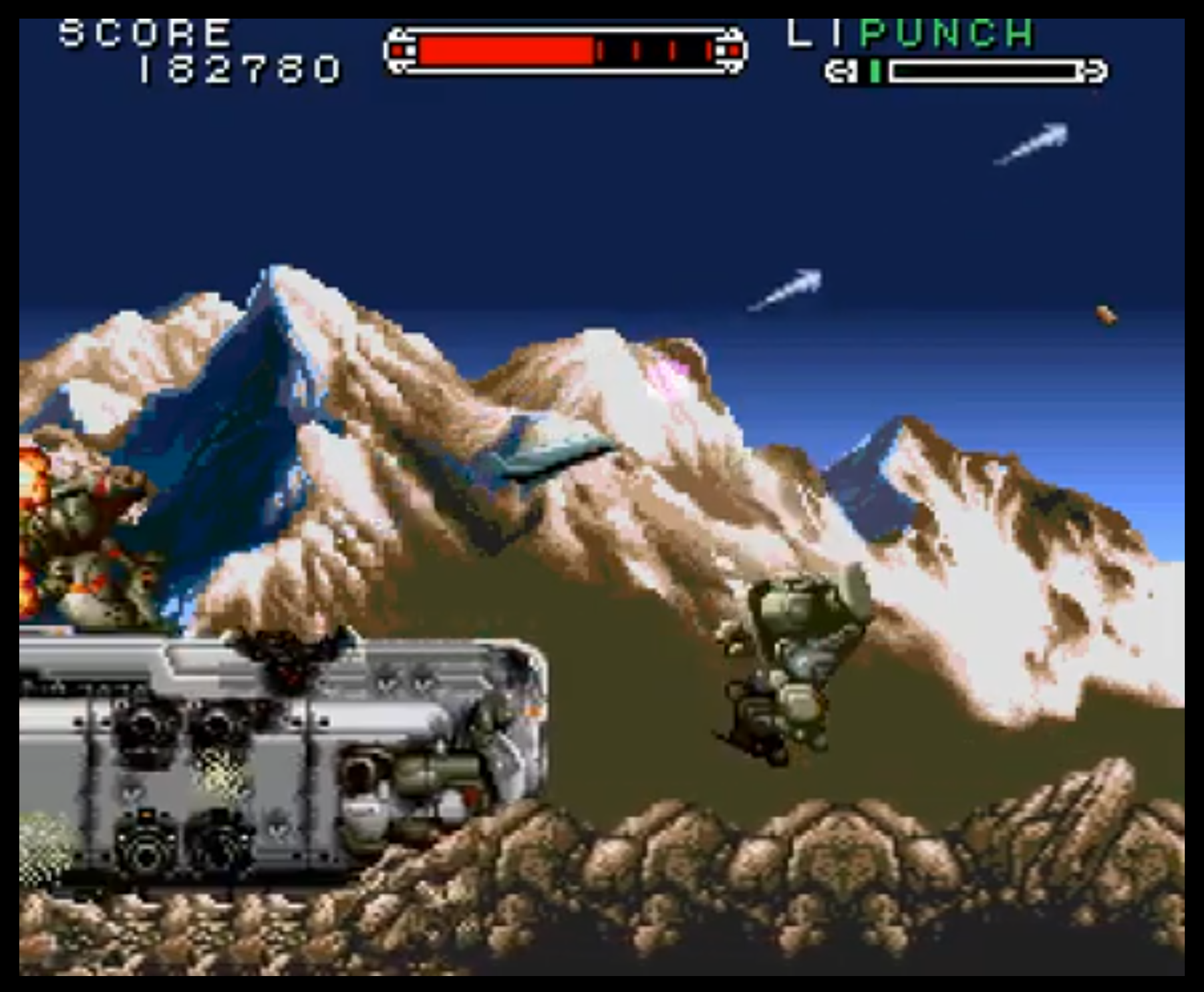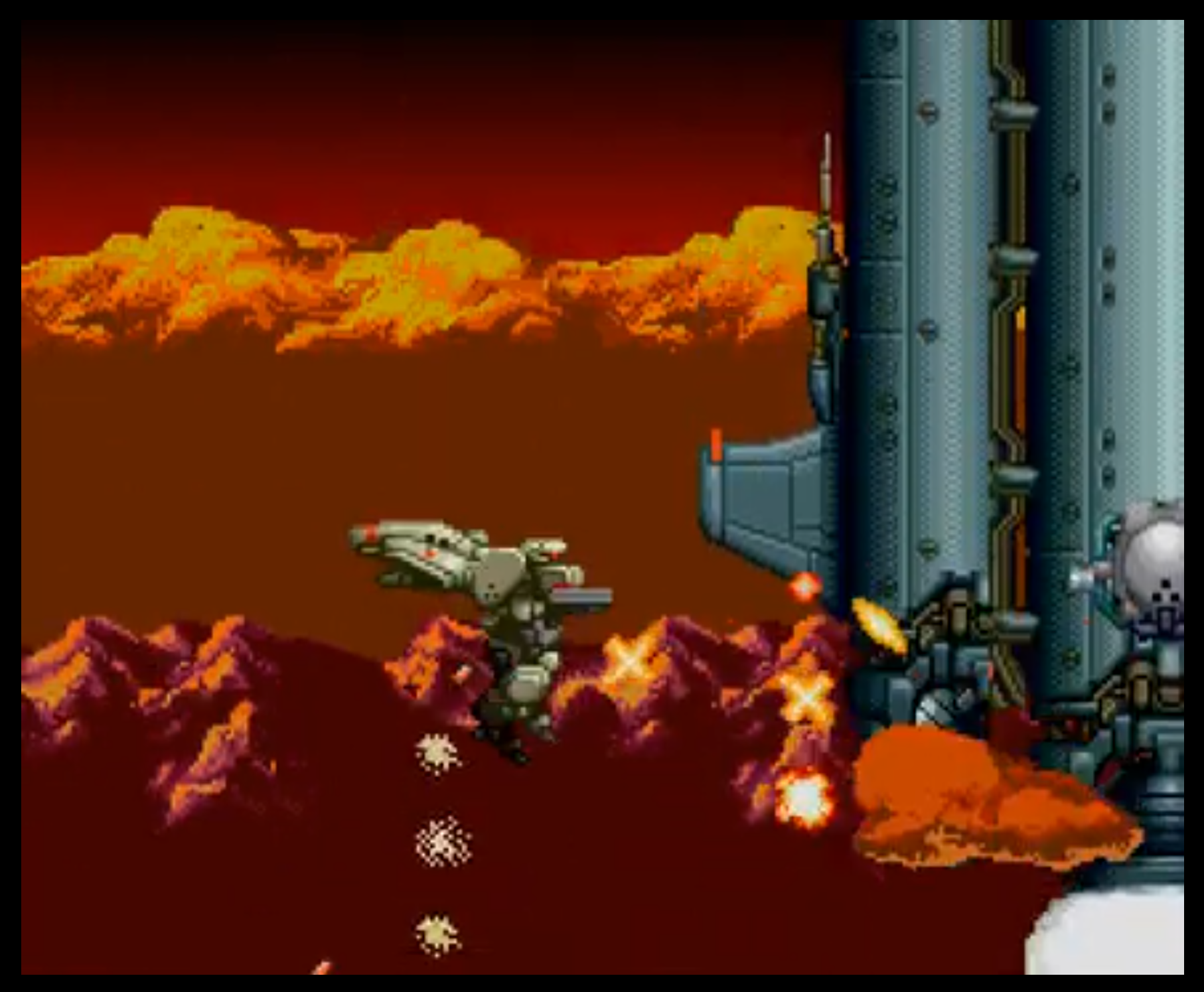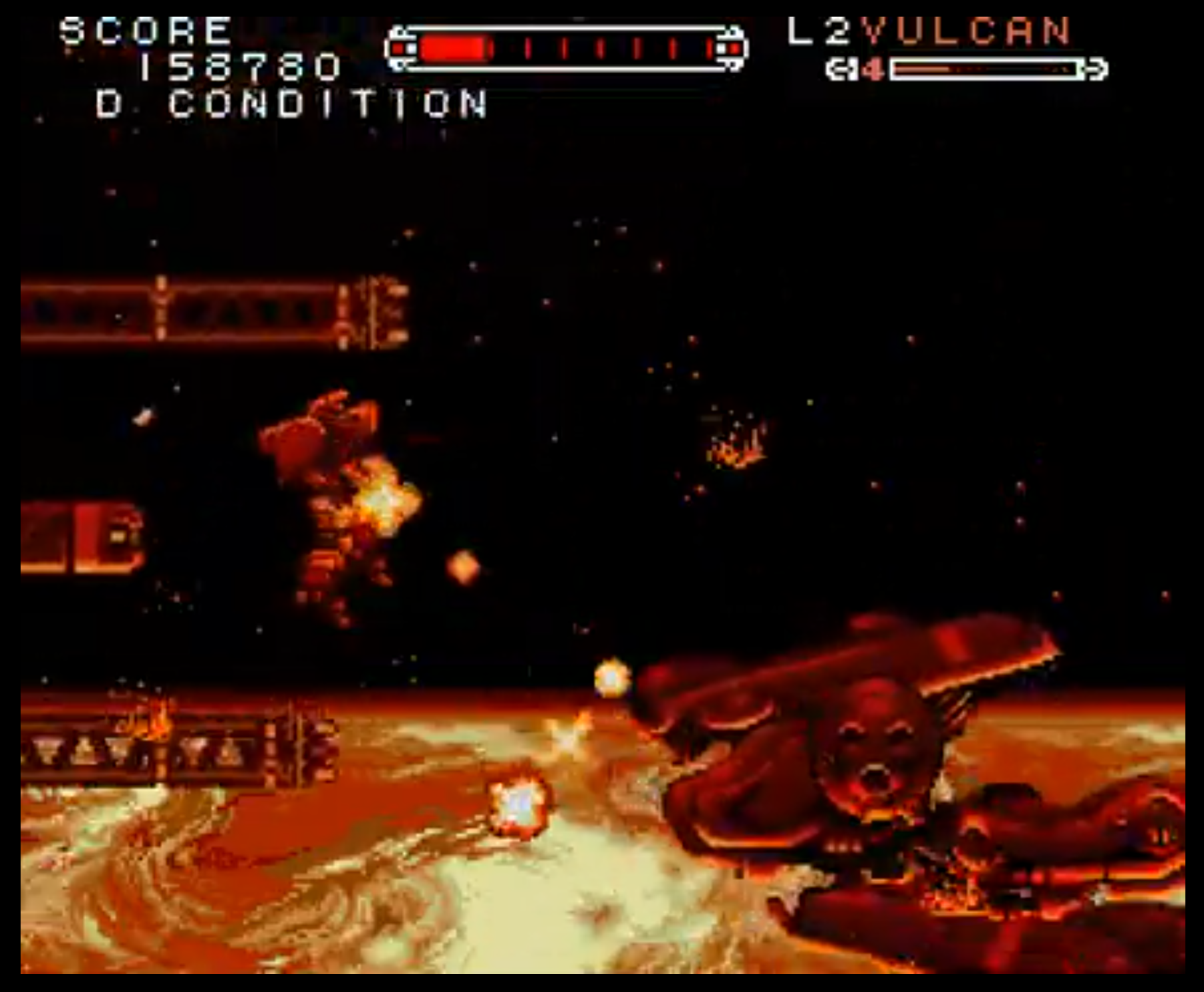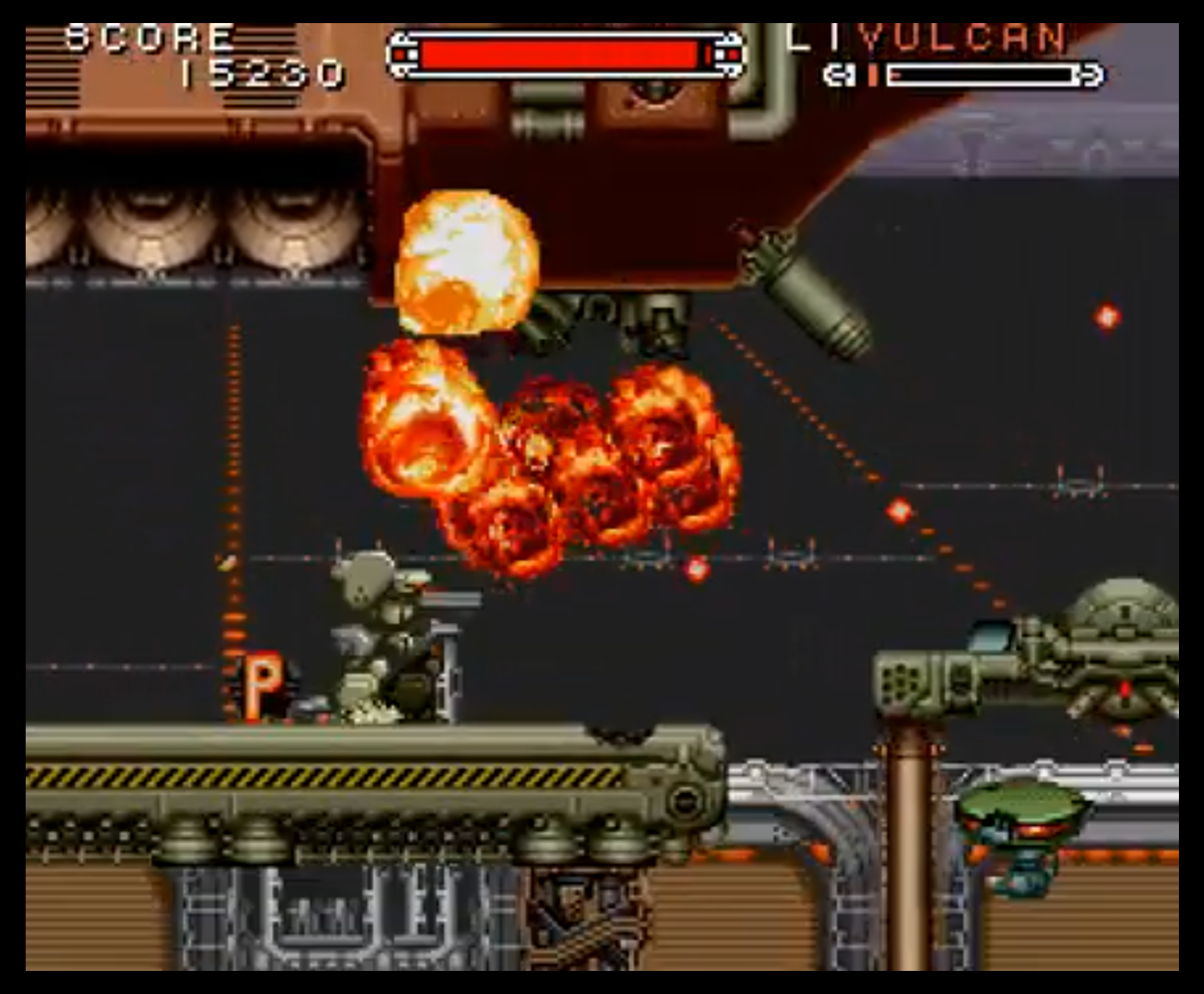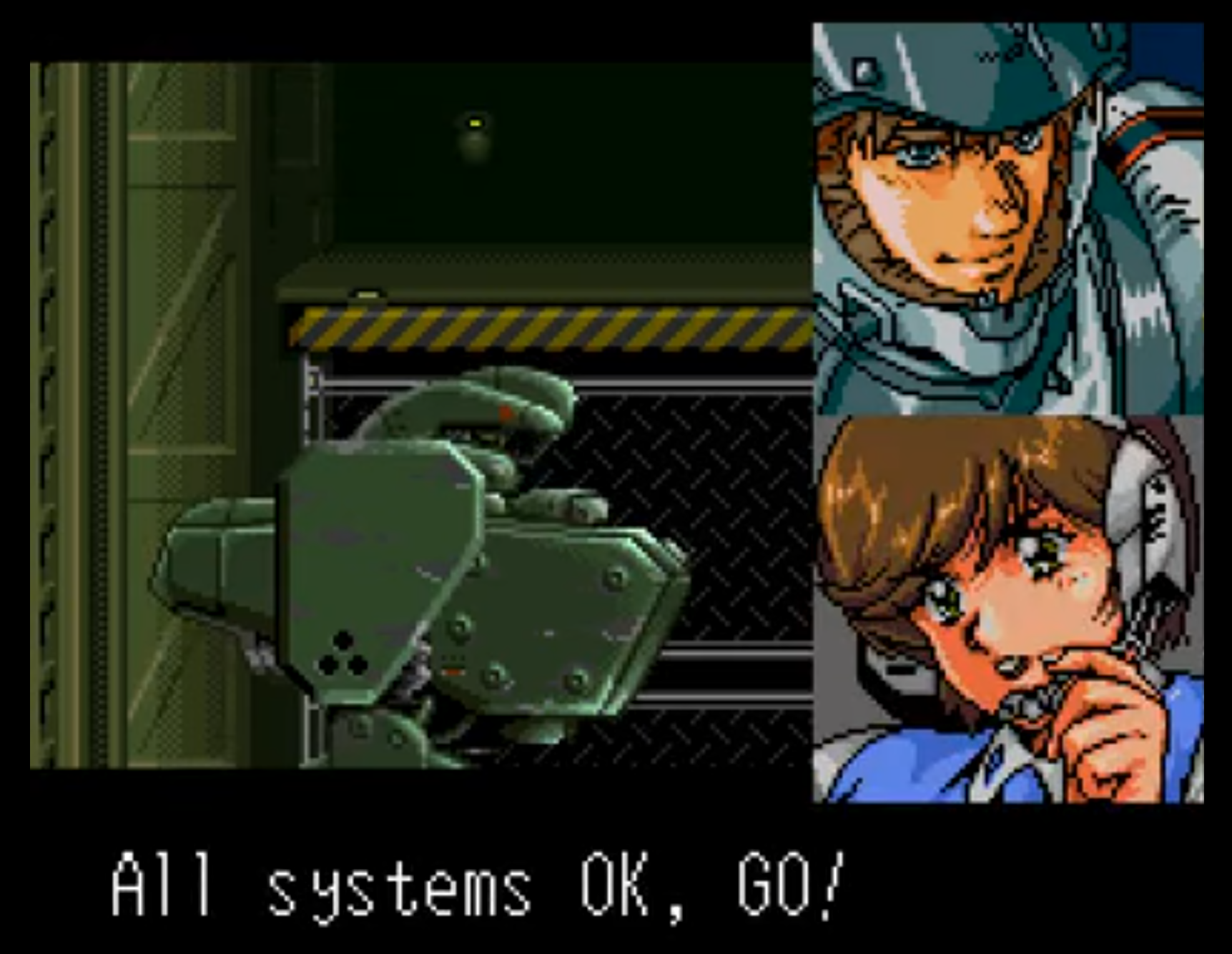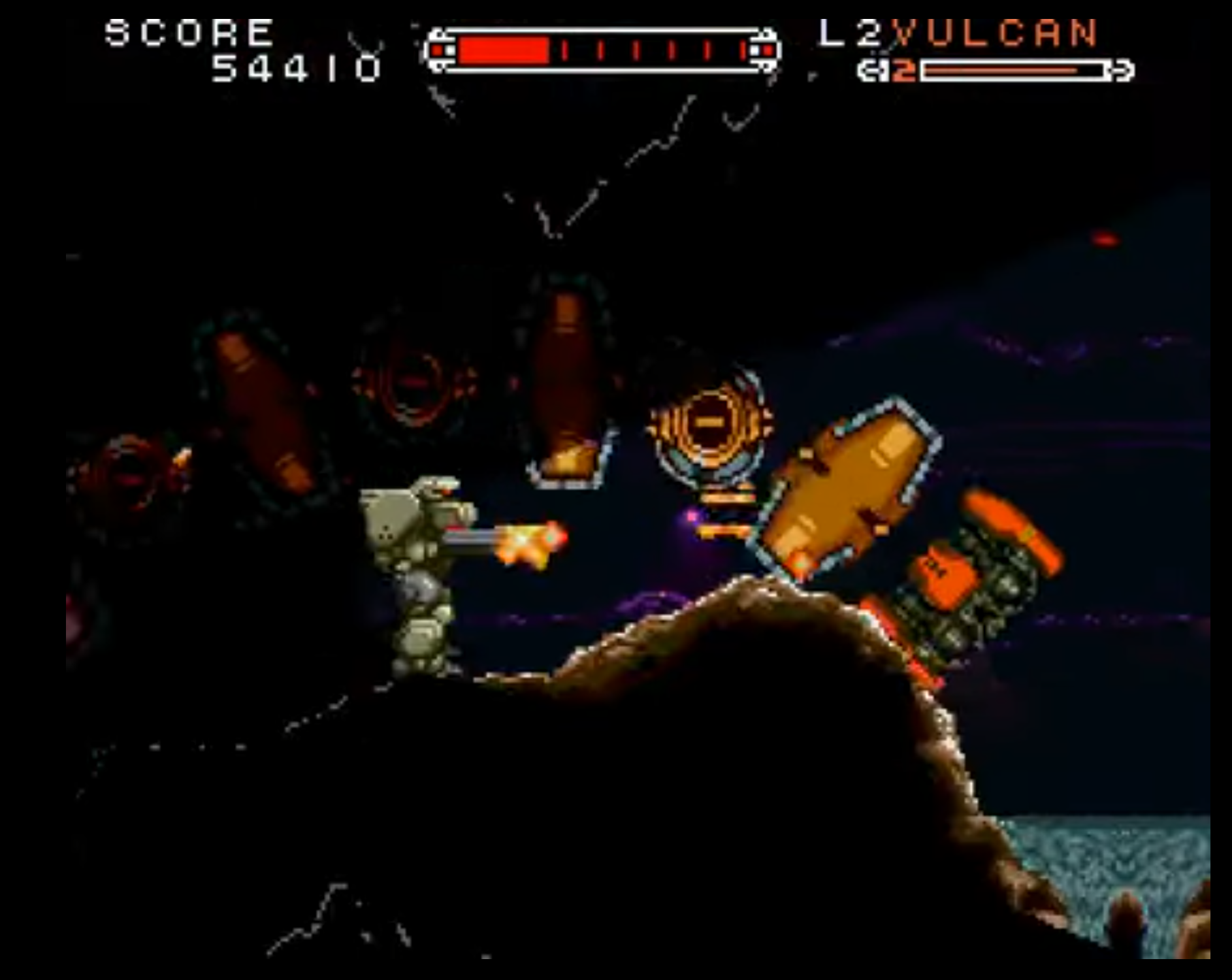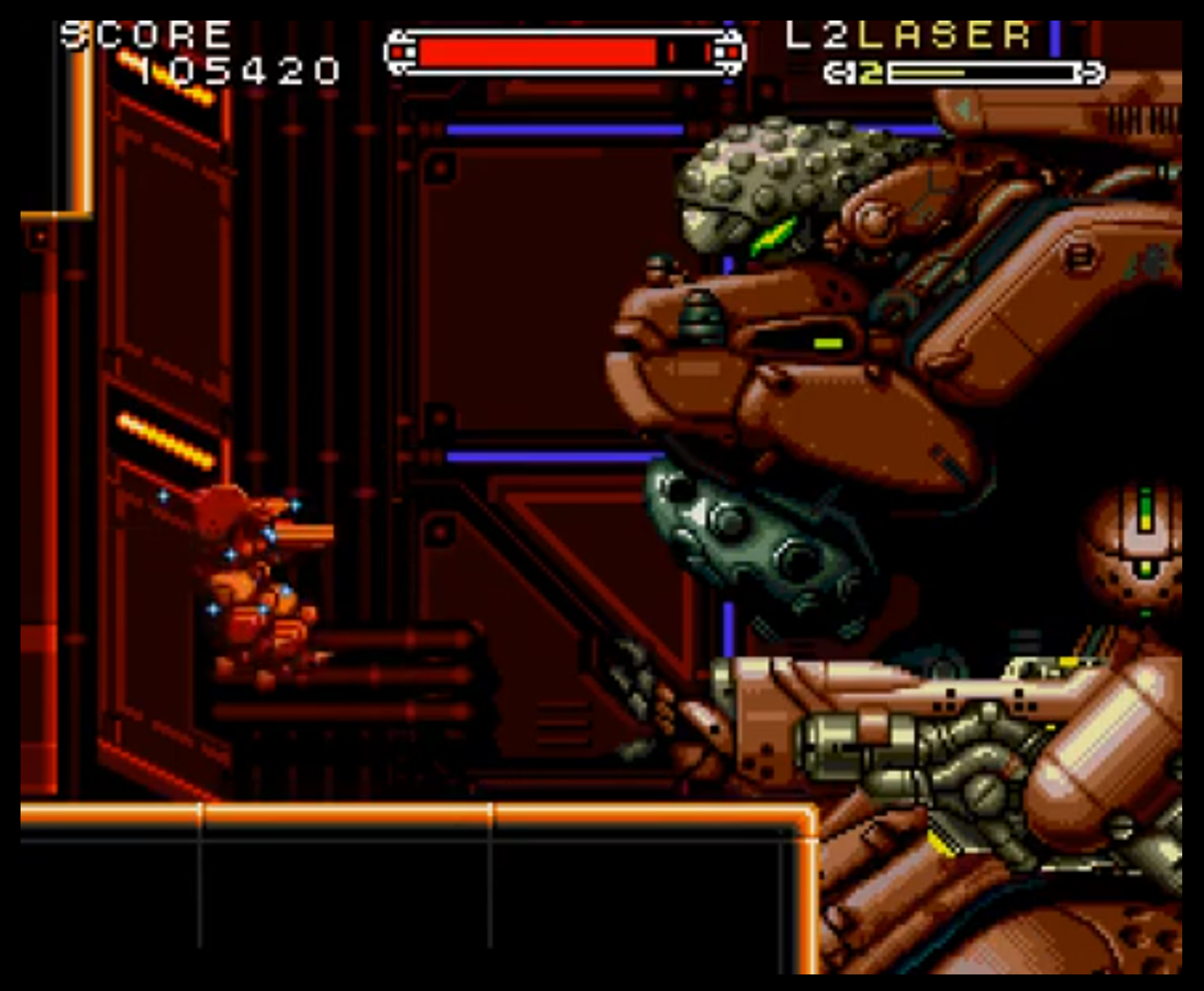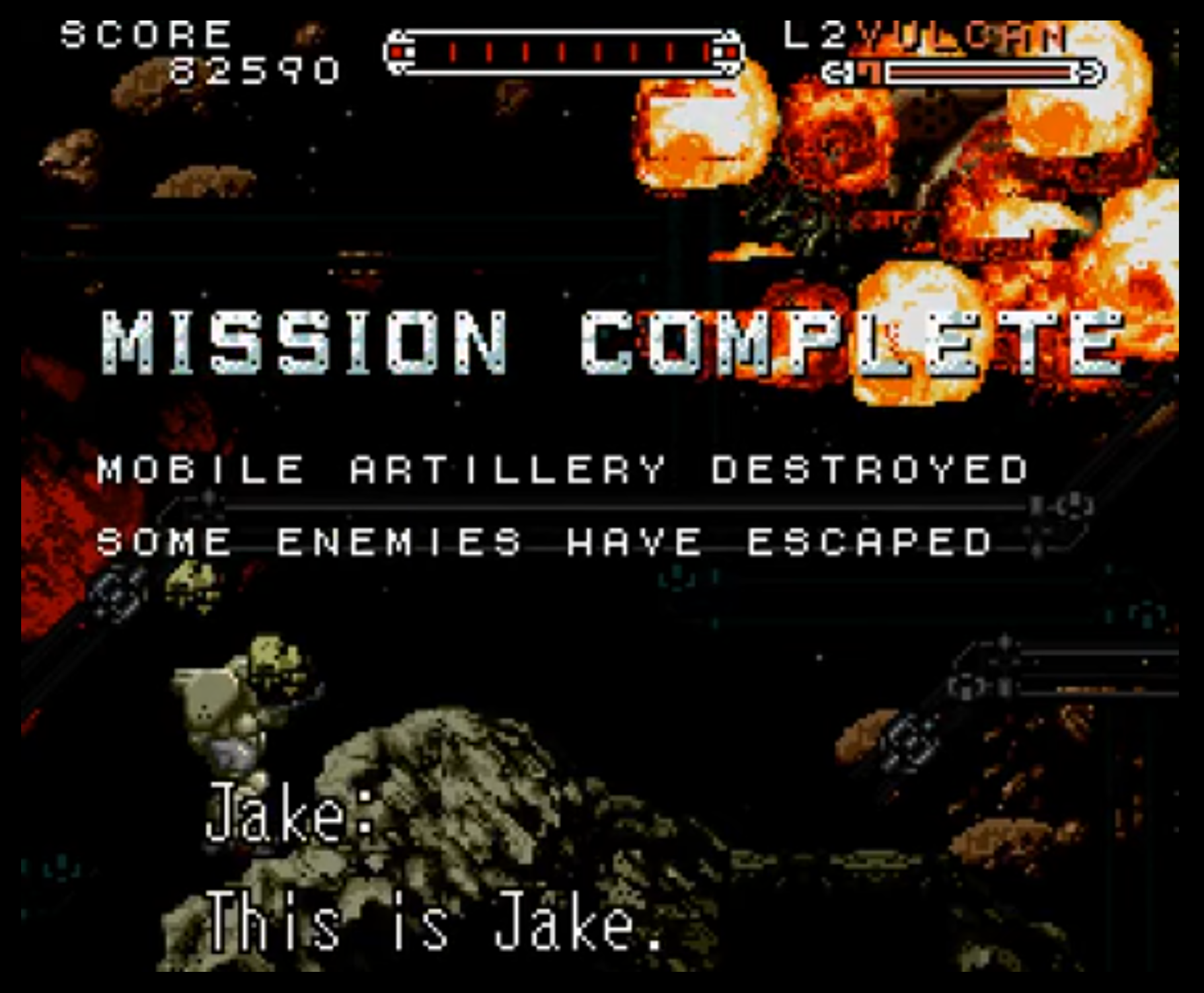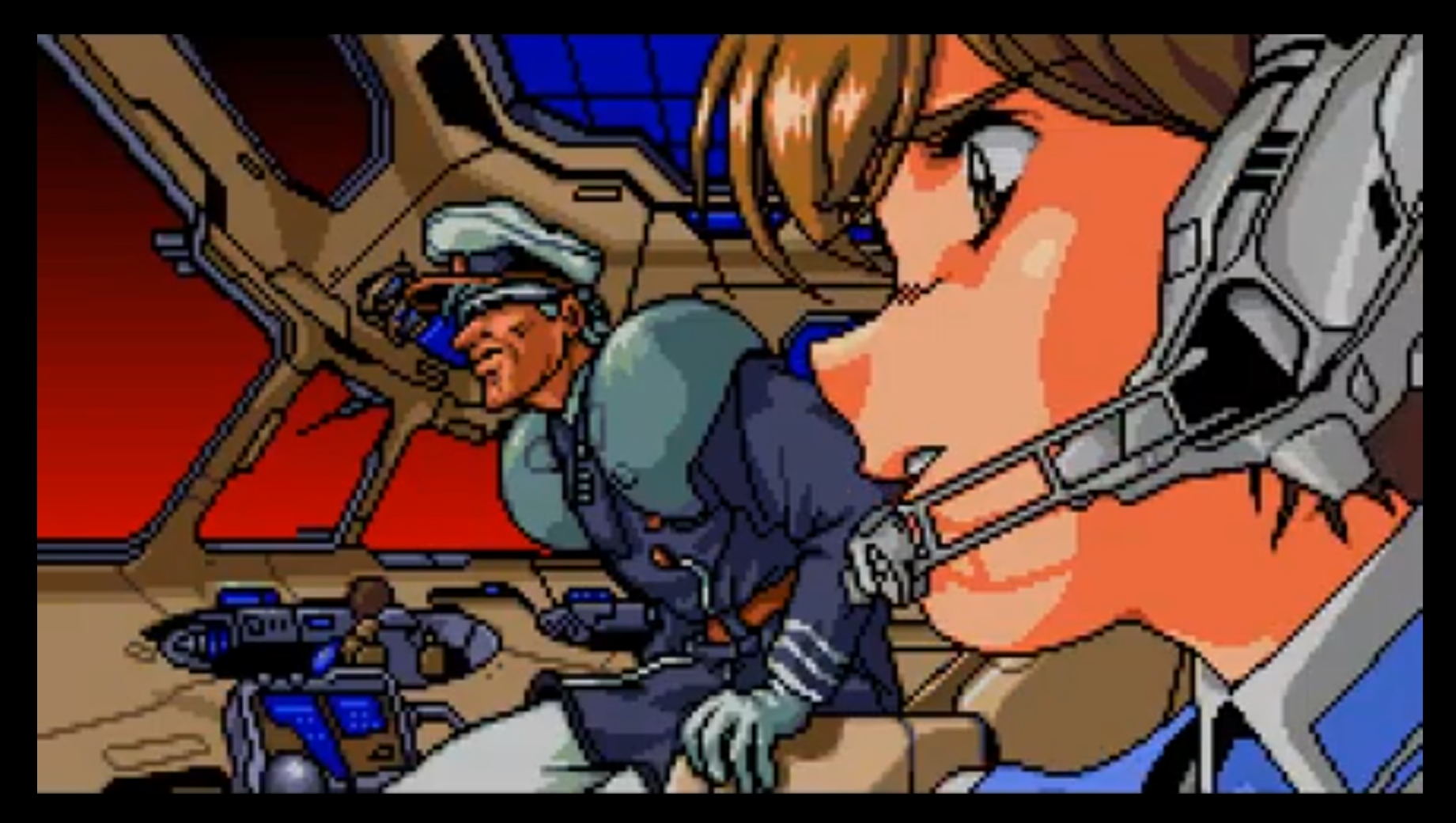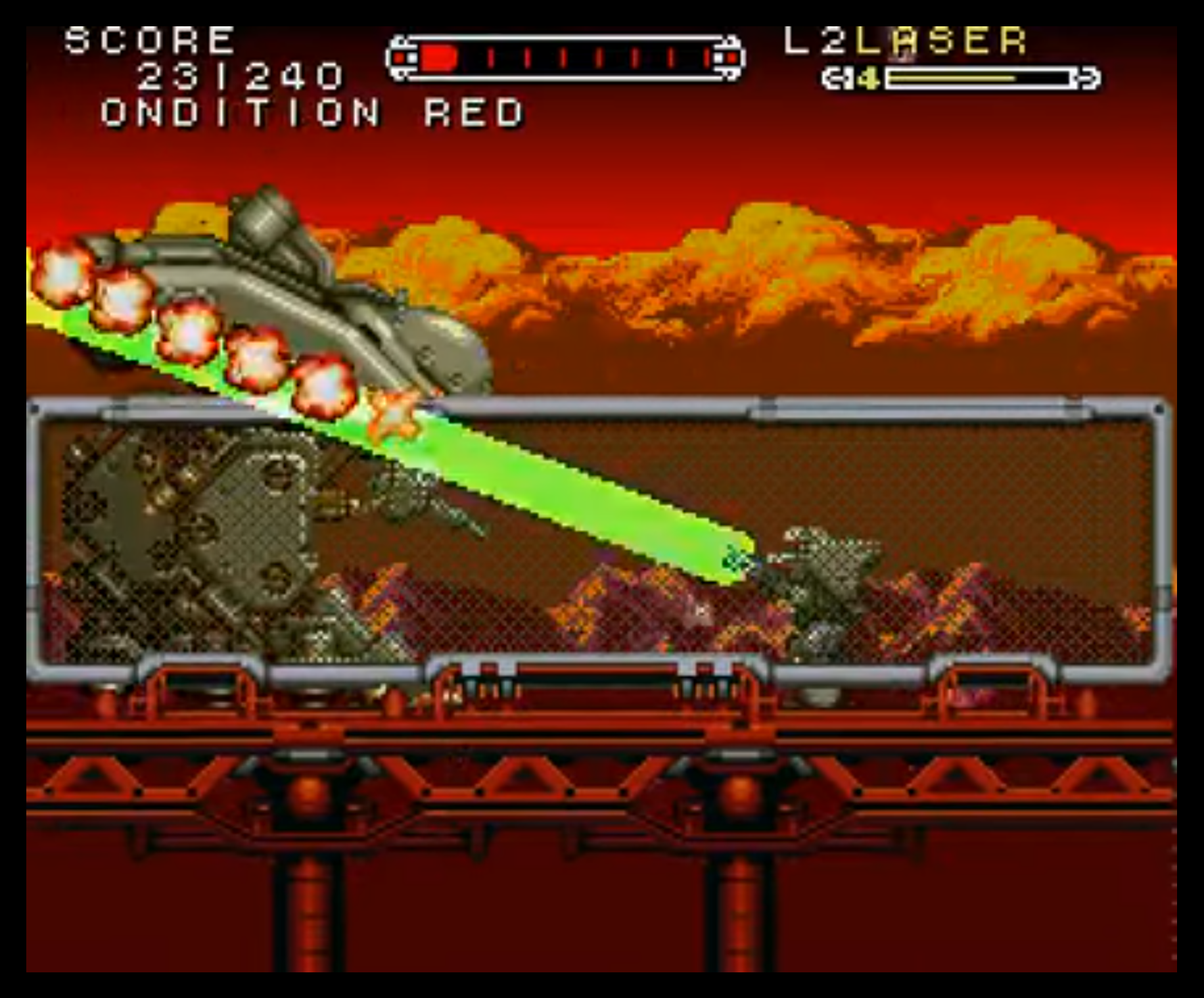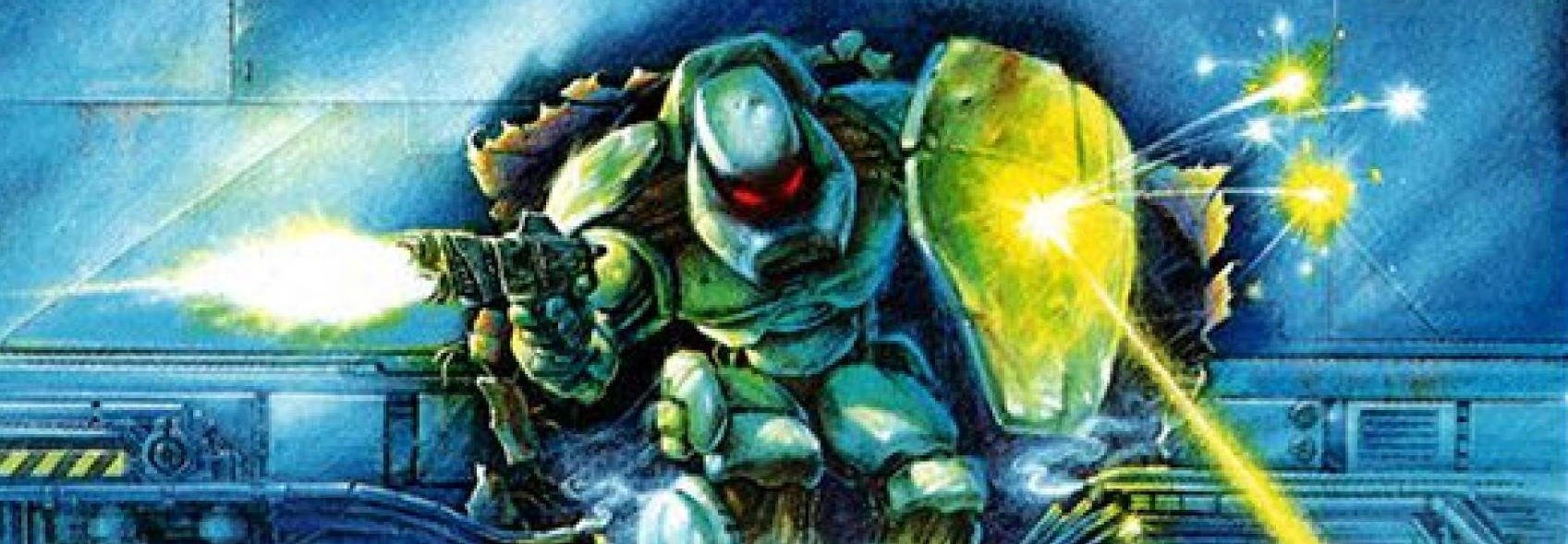
Review
Cybernator
Pricing Chart:
1
Number of Players:
Action, Run and Gun, Shoot ‘em Up
Genre(s):
None
Supported Peripherals:
Manual:
Label:
Box Art:
Konami
Publisher:
1993
Release Year:
Circuit Board:
Length:
Soundtrack:
ROM Archive:
ROMhacking Entry:
Longplay*:
Overview
As a member of the Pacific States Marine Corps battling against the “Axis” for Earth’s remaining resources and control of the moon, as the player you’ll take on the role of an assault mech pilot across 7 challenging missions before eventually facing off against the enemy leader in hopes of ending the war once and for all. Published by Konami, Cybernator with its unique mix of weapons, levels, secrets, and bosses is a highly polished action game that capably captures the feeling of being a mech pilot battling for survival. However, despite embodying the genre it represents and being featured on the cover of an issue of Nintendo Power, the game remains a bit of a hidden gem on the console receiving only limited praise despite its virtues.
Audio (15/20)
Unfamiliar with any of the composer’s other work, setting out on our first mission we were pleasantly surprised by the musical score put together by Masanao Akahori. With its classical undertones, heavier industrial sound, and the variety of moods conveyed, we were impressed not just by the sheer range of the songs but also by the layering found in each.
Our one small criticism of the soundtrack choice might be the safety of it - where other SNES games seem to have ventured out to define themselves using their music, we felt Cybernator clearly opts to take the safer ‘movie soundtrack’ approach, choosing to enhance the game instead of lead it. This isn’t entirely a bad thing as we found it serves its purpose capably and still includes some genuinely great tracks, like the moving In Despair with its somber determination, or the jubilant and satisfying Staff Roll when we eventually managed to roll the credits.
Thankfully, when it comes to the audio effects we had no such complaints. While sound effects are obviously important for immersion in any game, action games and the mech genre in particular seem to suffer worse than other genres if the audio effects lack oomf so its nice that Cybernator’s audio effect design is pitch perfect. With literal punchy sound effects, satisfying explosions, and a vulcan cannon sound effect that puts comparable mech game’s sound effects to absolute shame, the effects truly elevate the game.
Overall we found the audio design uniquely appropriate for our military industrial complex themed space adventure, and while we don’t think there’s any tracks that would make a retro game music greatest hits list - the audio design felt as reliable as our trusty assault suit itself.
Visuals (18/20)
Unlike many action games we’ve played, we found Cybernator’s visual design doesn’t just focus on enabling gameplay but actually works towards communicating the story. With unique levels, memorable set pieces, and an appropriate sense of scale, the visuals really worked to get us invested in each mission.
On the very first mission as we were dropped into the action, we immediately noticed that the size of our mech *felt* right. Where the slightly larger and more complex sprite would have felt out of place in most other games, in Cybernator it fit perfectly and immediately communicated two important concepts to us. The first being that this is a game where we were going to take some hits, and that was totally OK because we are a tanky badass weapon of war. The second being that because we’re a towering metal monster, it was definitely going to take some practice moving around before we would be able to gracefully pilot our machine.
Once we began testing out our various abilities we arrived at our distinct second impression of the visuals, which was that even if our piloting wasn’t smooth yet, the animations of our assault suit and our enemies undoubtedly was. A great start to any action game.
With the understanding that many SNES era action games used repeated or recolored assets, sprites, and backgrounds we were relieved to find that Cybernator completely bucks this trend. A trait which we found helped a lot in the tougher sections as we continued to be motivated to fight through just to see what crazy mission, mini-boss, or environment we’d see next.
The visuals definitely aren’t perfect though, one particular annoyance we found was on the Attack on Arc Nova mission where the developers used Mode 7 to scale some explosions up and into the foreground. Not only does this look bad, as it zooms in on the explosion animation making it pixelated and blocky, but also annoyed us as it temporarily obscured our view of the action. This is undoubtedly a case where the novelty of the new technology was prioritized over design and it probably dates the game more than any other single aspect.
Ultimately this is a minor complaint though and the game has solid visuals throughout which are both thematic and work hard to convey the critical sense of scale. From the larger than life bosses to crushing the tiny enemy soldiers with their tiny missile launchers - we expect even today’s player will be satisfied with the consistent and polished artwork and smooth animations.
Gameplay and Controls (18/20)
Cybernator is a perfect example of why having stiff controls isn’t the same as having clunky controls. While the experience can feel similar when you first pick up a game, clunky controls are imprecise and unresponsive while stiff controls are rigid but reliable. And the more we played Cybernator the more we came to appreciate that it was definitely in the latter category.
In fact, having now played through the game multiple times we think Cybernator might be one of the first games where the rigidity of the controls genuinely elevates the title on a thematic level. Where the stiff controls of games like Super Ghouls ‘n Ghosts can be jarring, the need for methodical movement in a game about piloting a giant metal assault suit feels right.
And we’re certain this was a conscious design decision for the purposes of gameplay because the game immediately went out of its way to give us a trivial first mission with plenty of open areas, lots of room to practice jump-jetting around, and no way to fall to our deaths. Where a modern day game might insist on a boring tutorial, Cybernator understood that we were new to piloting our mech but that we could figure it out on our own, and did a fantastic job easing us into the action with a forgiving first level.
Which isn’t to say that Cybernator is easy by any stretch. Oh no, quite the opposite in fact. It took us dozens of attempts to get past even the first handful of missions and from there it only gets harder.
As for the gameplay itself, technically speaking it’s a classic run n’ gun with some scrolling shoot ‘em up stages mixed in. And this variance combined with challenging boss fights and a mix of gravity and zero-g environments was more than enough to keep us interested over the course of our many attempts. With that in mind, despite its action orientated nature we did find that making progress in the game often required a more methodical approach to combat than many of the better known SNES run n’ gun titles we’d played. Which leads us to believe that if there’s any reason Cybernator remains a bit of a sleeper hit, it’s because of the slower pace required to tackle the challenging gameplay of the later missions.
That said, when we weren’t hunkering down spamming our shield and actually blasting Axis baddies, we appreciated the variety of the four weapons available: Vulcan, Missile, Laser, and Punch. With each serving different combat situations and having a satisfyingly unique increase in power such as the Vulcan cannon’s increased projectile size at level 3, all proved fun to use and upgrade.
Overall, the gameplay is one of the titles strengths and a modern player should have no trouble getting into action. The difficulty and more methodical pace required to succeed might turn some individuals off but we found the payoff for ‘gitting gud’ is definitely there.
Story and Presentation (14/20)
We found the presentation and story of Cybernator to be pretty run of the mill for a Run n’ gun. There’s a war over resources and we’re a soldier fighting to survive and destroy the enemy super weapon with few plot beats in between.
Immediately after hitting start the bare bones nature of the experience becomes apparent. While we found the pre-mission briefs and corresponding maps a useful introduction to each level, there isn’t much to emotionally charge the action. An aspect of the game that we found was made worse due to the mission briefs being written in past tense, as if we’d already succeeded and were reading our own journal. Unfortunately this first impression carried through to a number of other aspects as the game unfolds which left us with a clear motivation but lacking in any real character nuance.
Similar to the presentation, the story of Cybernator also leaves something to be desired, a fact which appears to stem from the North American release being gutted by censors with dialogue and key moments removed. Starting with an already light plot, we found ourselves disappointed knowing aspects such as character portraits and even a cutscene were trimmed, especially when that cutscene involves arguably the most interesting moral question of the whole game with the enemy head of state committing suicide for his failure.
All that said, there are positive notes, such as the HUD which is sensibly tucked up and out of the action at the top of the screen. In particular we appreciated the context sensitive weapons bar it contains, which elegantly handles communicating the different statuses for the active weapon: Displaying ammo left in the clip for the Vulcan cannon and Laser; The current charge status of our Punch; And our total stock of remaining missiles. We also appreciated the mission complete screens and dialogue fonts were also all satisfying and perfectly legible.
Overall the dialogues isn’t great and the characters are somewhat forgetable, but this wasn’t enough to drag the experience down, and is more just a case of mediocrity than any sort of flaw. Similar to the music we felt this was a case of the game playing it safe and letting the gameplay carry it through and it works. We don’t feel modern players will find much to take issue with, but maybe that’s because they just won’t find much here in general.
Systems and Design (17/20)
Where the presentation might fall down in some places, the systems and level design of Cybernator are rock solid. A big part of what we found so enjoyable about playing through the game was that we were rewarded for strategically using the power up systems and really exploring the levels.
For us the real ‘aha’ moment with the strategic nature of the power chips came at start of the fourth mission, Atmosphere Entry, when we realized every third kill of an enemy mech netted us a power chip, and that the Punch weapon was most effective means of racking up kills. Until that point we had mostly avoided leveling Punch in favor of missiles, but on our next run we prioritized upgrading it and were rewarded with being able to farm substantially more power chips setting us up for success in the subsequent levels. And by the time we had successfully beaten the game, we’d created a strategic order to upgrading our kit to maximize based on all the small optimizations we had discovered.
Which isn’t to say the systems are perfect, admittedly by the end of the game the weapons don’t feel entirely balanced and once we’d fully upgraded the Laser it felt disproportionately powerful and we didn’t rely much on the other three options. The exception to this being the secret fifth weapon, the napalm gun which: Can be unlocked if your score is 2800 at the end of the first mission; You get to keep if you survive the second level without dying; And can be upgraded if your score is 5600 at the end of the second level. Notably these low scores can only be achieved by not destroying anything in the first two missions (including asteroids) except for the bosses themselves.
Which brings us to Cybernator’s other shining aspect, its level design. From the open first level to the claustrophobic underground caves, the variety and thoughtfulness of the level design extends through the entire game. It felt good to be regularly rewarded with health and upgrades for our exploration efforts and mastering the hazards of the each path was fun.
That said, once you’ve got the layouts memorized, there’s limited replay-ability as we eventually found ourselves using a very specific route to maximize the number of weapon power chips we could pick up. And this lack of replay-abililty was made worse by the difficulty essentially forcing us to also follow a specific weapon upgrade order.
Ultimately though, the systems and level design are well thought out and rewarding. Modern players might not find them as deep as newer titles but there’s little else to find fault with.
Summary (82/100)
Cybernator is a polished and even underrated SNES action game that delivers satisfying run n’ gun action with a methodical pace that fits its theme and heavy feel of its assault suit controls. The game’s detailed visuals, atmospheric soundtrack, and punchy sound effects enhance its immersive tone, while its varied level design and upgrade systems reward thoughtful play and exploration. Although the story is generic and its localization stripped away key moments, Cybernator remains a standout title in the mech genre that still holds up for modern audiences.
*Image Source Credit
